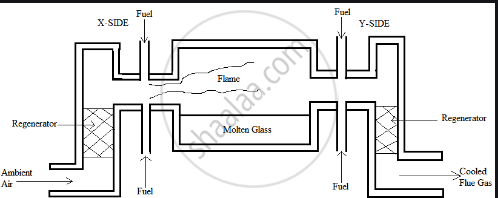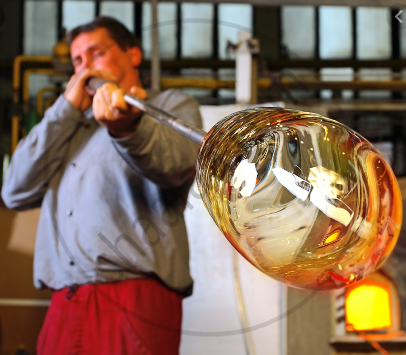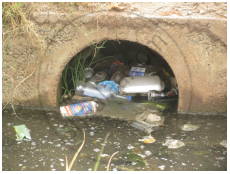Advertisements
Advertisements
प्रश्न
Write short note.
Glass production.
उत्तर
Glass production:
The manufacturing process of glass consists of four major operations: (1) Melting, (2) Shaping, (3) Annealing, (4) Finishing. Each operation is being discussed briefly as follows:
1. Melting: The ingredients called batch materials are mixed in the appropriate proportion and heated to fusion in a furnace. For glass production, a mixture of sand(silicon dioxide), lime and a small quantity of magnesium oxide is added. The two most commonly used furnaces are (i) Pot furnace and (ii) Tank furnace.
(i) Pot Furnace: In this furnace, the charge is fused in fire clay pots. The pots may be opened or closed. The closed pots are used when the-glass is to be protected from the products of combustion.

(ii) Tank Furnace: It consists of a large rectangular tank built of fire clay blocks. The batch materials are fed into the tank and producer gas is used as a fuel in the furnace.

2. Shaping: The plastic glass formed in the furnace is next shaped or formed into the desired articles. It is accomplished by blowing from the mouth or by means of a machine.

Shaping of glass lump.
3. Annealing: It is a process of cooling slowly the newly shaped articles. If they are cooled quickly they become brittle on account of the high internal strain. Annealing allows the molecules to arrange themselves in such a way that there is no internal strain when the mass is cooled. Annealing is done in a tunnel-like oven called lehr
4. Finishing: The articles obtained from the lehr are subjected to a number of operations such as cleaning, polishing, grinding, rounding edges, etc., for bringing them to a useable form.
संबंधित प्रश्न
Give examples to show that plastics are non-corrosive in nature.
Plastic shows ______ property, hence it can be moulded to any shape.
Motor cars are coated with ____________.
______ are used to identify different types of plastics.
Look at the following picture and explain what is happening.

Read the following information and convert them into a graph to compare the countries and the amount of plastic they use.
China contributes the highest share - that is around 28%, of the total plastic used globally. Indonesia uses 10%, both the Philippines and Vietnam use 6% each; Thailand uses 3.2%, Egypt 3%, Nigeria 2.7% and South Africa 2%.
What are the drawbacks of plastics?
Polycarbonate (PC) plastic contains ______.
Assertion (A): PVC is an unsafe plastic.
Reason (R): Burning PVC releases dioxins, a most toxic chemical.
Give some examples of one-time-use plastic.
